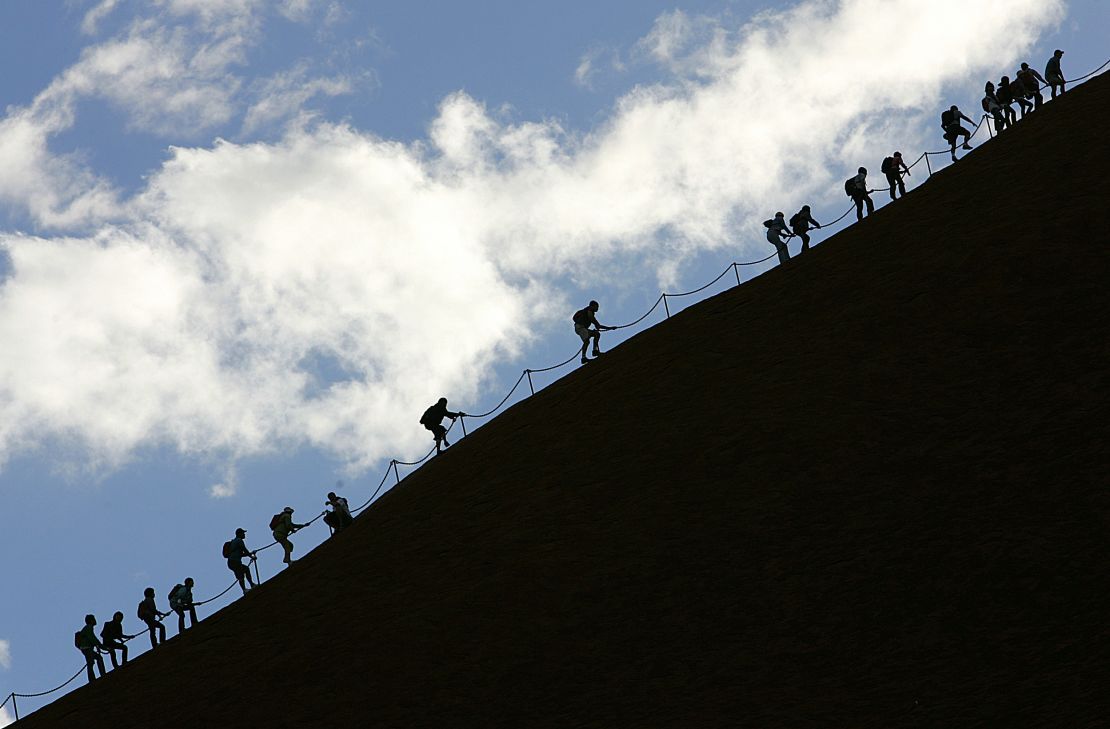A Japanese tourist has died while trying to climb Uluru, formerly known as Ayers Rock, in Australia’s Northern Territory.
The 76-year-old man collapsed on Tuesday afternoon while ascending one of the steepest parts of the climb, ABC News reported.
He was lifted by helicopter to a clinic in nearby town of Yulara, where he was later confirmed dead.
He is the 37th person to die climbing Uluru since the 1950s, when authorities began keeping records. The last death was in 2010.

A sacred site
The Uluru-Kata Tjuta National Park board has long urged visitors not to climb Uluru, and an official ban will come into effect on October 26, 2019.
The date coincides with the 34th anniversary of Uluru’s handover; in 1985, the Australian government formally transferred ownership back to the local Indigenous population, the land’s traditional owners.
Uluru is sacred to Australia’s Indigenous peoples because it’s believed to have been formed during the Dreamtime, which is the ancient period when all living things were created, and whose spirits continue into the present.
The massive rock is thought to have once been a Dreamtime ancestor who roamed the Earth and created the features of the landscape, before turning into the distinctive landform it is today. Archaeological findings indicate that humans settled in the area more than 10,000 years ago. Uluru is also a UNESCO World Heritage Site.

For many years, Australia’s Indigenous population has asked that locals and visitors respect their culture.
“The climb is not prohibited but we ask you to respect our law and culture by not climbing Uluru,” says a notice on the National Park’s website.
Uluru traditional owner, Sammy Wilson, who is also chairman of the Uluru-Kata Tjuta National Park board, said in a statement last year that the closing of the site should be celebrated as a mark of progress.
“If I travel to another country and there is a sacred site, an area of restricted access, I don’t enter or climb it, I respect it,” said Wilson.
“It is the same here for Anangu [Uluru’s traditional owners]. We welcome tourists here. We are not stopping tourism, just this activity.”



